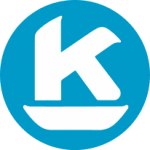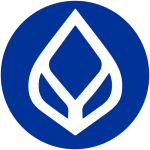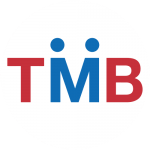Conceptually, the operating cycle measures the time it takes a company to purchase inventory, sell the finished inventory, and collect cash from customers who paid on credit. An effective operational process helps businesses by improving their cash flow, which in turn has a positive effect on other aspects of their business. Reducing how to develop a process map for operations management costs while also increasing speed and improving quality can be beneficial to business owners. Increased profits are often the end result of running a business more efficiently. For example, the net accounts receivable turnover is used to determine how often customers must pay for their product before they can make another purchase.
- Conceptually, the operating cycle measures the time it takes a company to purchase inventory, sell the finished inventory, and collect cash from customers who paid on credit.
- This is done because the NOC is only concerned with the time between paying for inventory to the cash collected from the sale of inventory.
- The duration taken for a corporation to convert inventory purchases into cash revenues from a sale.
- The third phase is accounts receivable turnover days when the firm is evaluated on how quickly it can collect money for its sales.
The formula for calculating the operating cycle is the sum of days inventory outstanding (DIO) and days sales outstanding (DSO). The Operating Cycle tracks the number of days between the initial date of inventory purchase and the receipt of cash payment from customer credit purchases. For example, an efficient sales force can increase the company’s market share and reduce the time it takes to acquire new customers. Also, high inventory turnover can reflect a company’s efficient operations, which in turn lead to increased shareholder value. This is computed by dividing 365 with the quotient of credit sales and average accounts receivable or receivable return.
Our Services
All such information is provided solely for convenience purposes only and all users thereof should be guided accordingly. We’ll now move to a modeling exercise, which you can access by filling out the form below. A financial professional will offer guidance based on the information provided and offer a no-obligation call to better understand your situation. Someone on our team will connect you with a financial professional in our network holding the correct designation and expertise.
The cash OC, cash conversion cycle, or asset conversion cycle are other common names. For example, an efficient collection period (accounts receivable days) could reduce the number of outstanding invoices, which makes it easier for a business owner to accurately forecast cash receipts and expenses for each accounting period. An Operating Cycle (OC) refers to the days required for a business to receive inventory, sell the inventory, and collect cash from the sale of the inventory. A shorter operational cycle is preferable since the firm has adequate cash to keep operations running, recoup investments, and satisfy other commitments. In contrast, a company with a longer OC will require more capital to keep operations running.
What is an Operating Cycle?
Access and download collection of free Templates to help power your productivity and performance. You may use the cost of revenue as an estimate for purchases (i.e., no need to adjust it for changes in inventories). Kevin is currently the Head of Execution and a Vice President at Ion Pacific, a merchant bank and asset manager based Hong Kong that invests in the technology sector globally. Prior to joining Ion Pacific, Kevin was a Vice President at Accordion Partners, a consulting firm that works with management teams at portfolio companies of leading private equity firms. Finance Strategists is a leading financial education organization that connects people with financial professionals, priding itself on providing accurate and reliable financial information to millions of readers each year. The articles and research support materials available on this site are educational and are not intended to be investment or tax advice.
Accounts Receivable Period is equal to the number of days it takes to receive payment for goods and services sold. Considered from a larger perspective, the operating cycle affects the financial health of a company by giving them an idea of how much its operations will cost, as well as how quickly it can pay its debts. The most straightforward method is to abbreviate each three-cycle portion by at least a tiny amount. The first step is to calculate DIO by dividing the average inventory balance by the current period COGS and then multiplying it by 365. The companies with high operational efficiency are typically those that provide goods or services with short shelf lives i.e., clothing, electronics, etc. By optimizing the operation cycle, a company can greatly improve its cash management and decrease costs.
The OC would not stop until all products were sold and payment was collected from clients. However, you can also calculate the ratio by dividing the cost of products sold by the average inventory. On average, it takes the company 97 days to purchase raw material, turn the inventory into marketable products, and sell it to customers. What this means is that investing in operational process improvement can help reduce costs, increase speed, and improve quality, which will likely lead to increased profits at the end of the day.
A company with an extremely short operating cycle requires less cash to maintain its operations, and so can still grow while selling at relatively small margins. Conversely, a business may have fat margins and yet still require additional financing to grow at even a modest pace, if its operating cycle is unusually long. If a company is a reseller, then the operating cycle does not include any time for production – it is simply the date from the initial cash outlay to the date of cash receipt from the customer.
The NOC computation differs from the first in subtracting the accounts payable period from the first because the NOC is only concerned with the time between purchasing items and getting payment from their sale. An OC is the number of days it takes for a company to receive inventory, sell goods, and earn cash from the sale of merchandise. The next phase is inventory turnover, a ratio that shows how frequently a firm sells and replaces its inventory over time. This ratio is typically calculated by dividing total sales by total inventory. For instance, the duration of a particular company could be high relative to comparable peers. Such an issue could stem from the inefficient collection of credit purchases, rather than due to supply chain or inventory turnover issues.
The operating cycle of a business
To improve an operational process, business owners should look at the accounts receivable turnover, average payment period (inventory days), and inventory turnover. The third phase is accounts receivable turnover days when the firm is evaluated on how quickly it can collect money for its sales. As previously stated, the operational cycle is complete when all of these processes are completed. It is used to calculate accounts receivable turnover, inventory turnover, average collection period (accounts receivable days), and average payment period (inventory days). An operating cycle refers to the number of days it takes for a company to convert its investment in inventory, accounts receivable (A/R), and accounts payable (A/P) into cash. A shorter cycle is preferred and indicates a more efficient and successful business.
The Operating Cycle is calculated by getting the sum of the inventory period and accounts receivable period. Thus, several management decisions (or negotiated issues with business https://www.bookkeeping-reviews.com/accounting-software-for-mac/ partners) can impact the operating cycle of a business. Ideally, the cycle should be kept as short as possible, so that the cash requirements of the business are reduced.
On the other hand, companies that sell products or services that do not have shorter life spans or require less inventory tend to be less efficient in terms of operational processes. A shorter cycle suggests that a corporation can swiftly recover its inventory investment and have adequate cash to satisfy its obligations. To be more exact, payable turnover days measure how quickly a corporation can pay off its financial commitments to suppliers. The operating cycle (OC) specifies how long it takes for a corporation to convert inventory purchases into cash revenues from a sale.





















